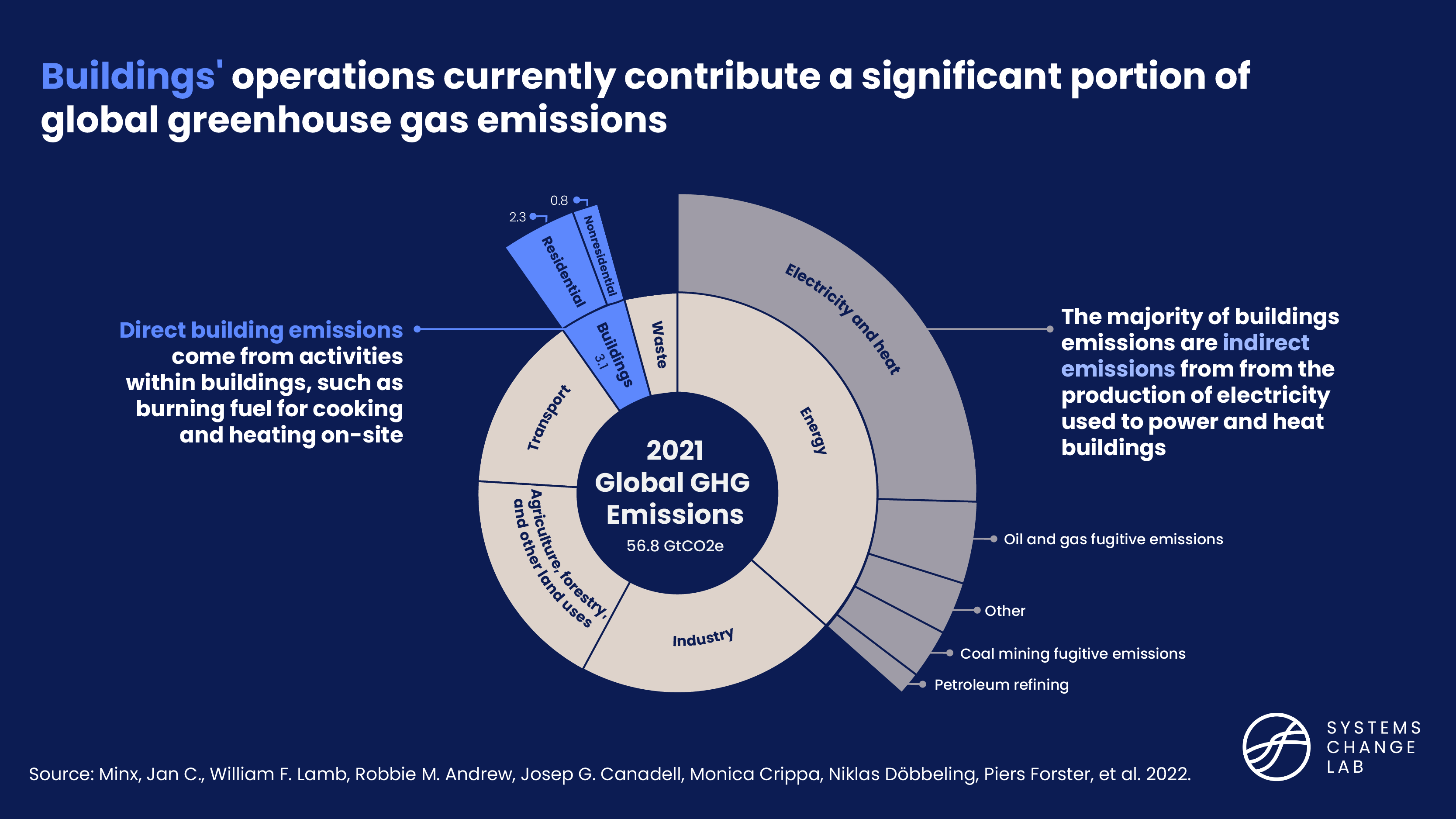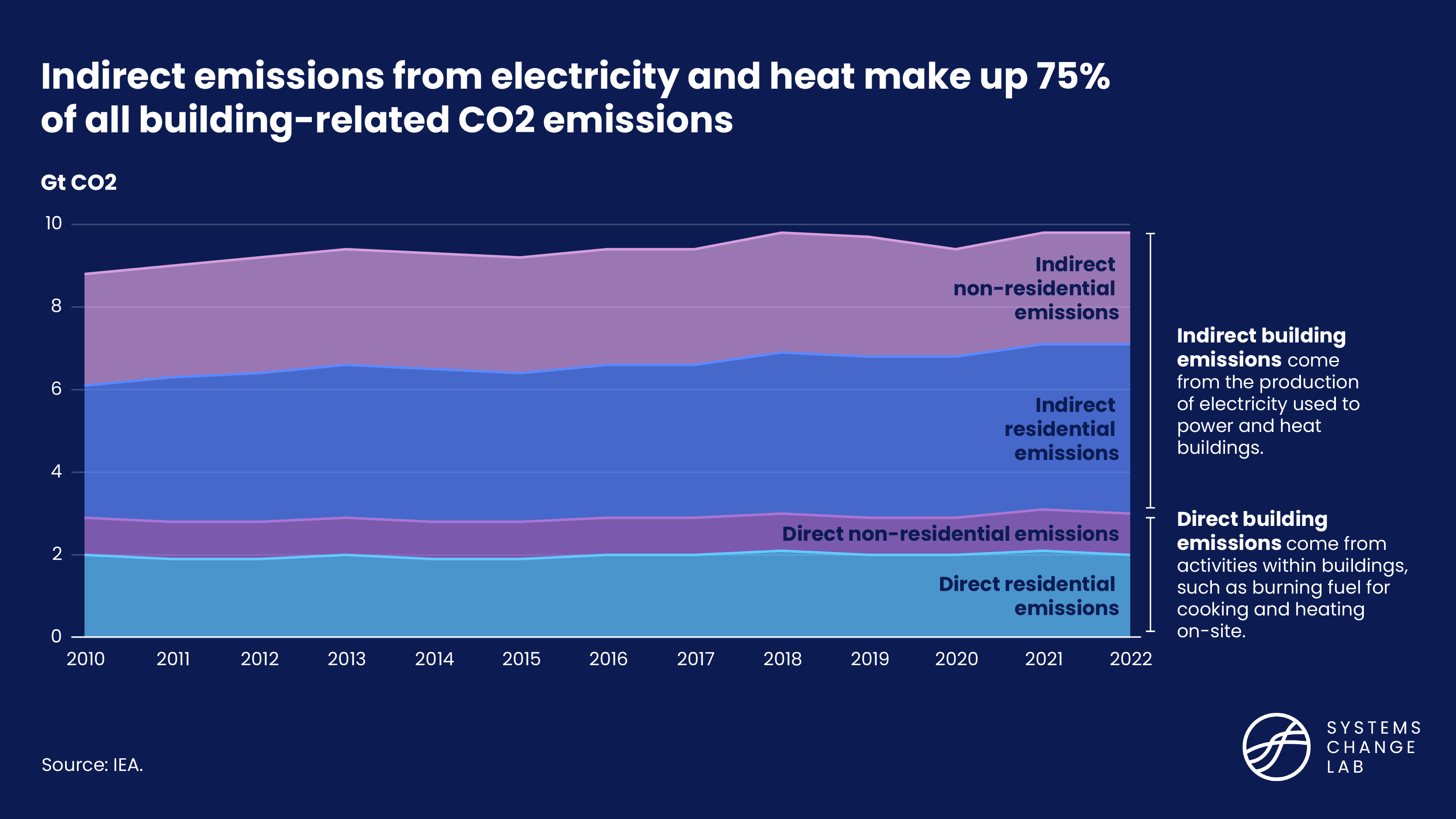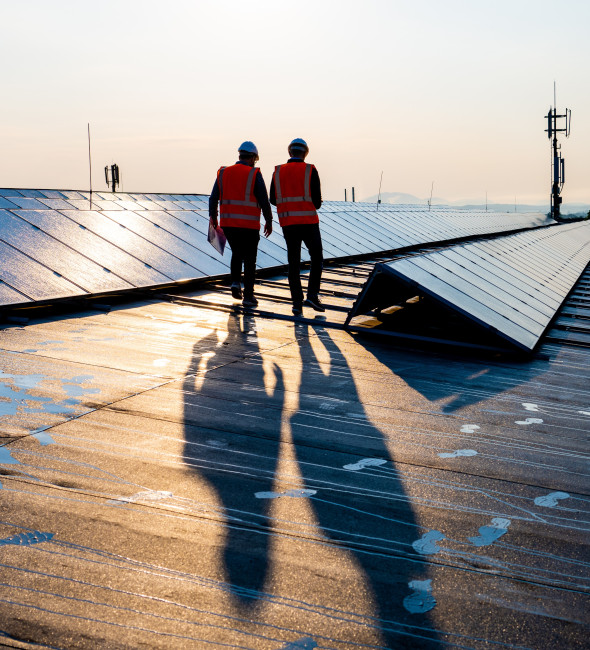
Photo by Kim Willems/iStock
A closer look at the buildings system
The role of buildings in greenhouse gas emissions
Buildings provide shelter, safety and economic opportunity for people around the world. The construction and operation of buildings connects a wide range of interrelated systems, including the materials to build them and the transportation needed to move these materials, the electricity to power them, the energy to make them comfortable and habitable, and their connections with the surrounding environment, such as cities. However, the way we currently construct and operate our buildings contributes a significant source of greenhouse gas (GHG) emissions, including those released directly on-site, refrigerants from cooling devices and equipment, and those released off-site in the production of energy used in buildings.

How many GHG emissions come from buildings?
Direct GHG emissions from burning fuel for cooking and heating on-site accounted for an estimated 6% of GHGs globally in 2021. When also taking into account the indirect GHG emissions released off-site from the production of electricity and heat that is used for heating, cooling, cooking, lighting, electronics and other activities in buildings, these GHG emissions roughly triple from about 3 gigatonnes of carbon dioxide (GtCO2) to 10 GtCO2 (approximately 18% of global GHG emissions). Constructing and furnishing buildings creates additional emissions, known as embodied emissions, from the production and transportation of materials and the energy required to construct and retrofit buildings.

Current trends of emissions from the world’s buildings
Direct emissions from all activities carried out in buildings remained roughly stable from 2010 to 2022, and while indirect emissions increased slightly over that period, they have also remained roughly stable since 2018. Global buildings floor area — the combined floor area from residential and commercial buildings — is expected to almost double by 2050. If new buildings are constructed with inadequate insulation and the same fossil fuel-powered equipment (such as gas boilers for heating) used in most buildings today, emissions will increase further and it will be impossible to meet climate goals.
Key strategies to reduce and eliminate building-related emissions
Eliminating emissions related to buildings requires three major shifts:
- Designing and constructing zero-carbon buildings from materials made with zero or net-zero emissions;
- Optimizing energy use through efficiency and reducing energy demand through behavior change, building design and efficiency of appliances, so that buildings get better results with less energy; and
- Decarbonizing heating, cooling and appliances so that the use of appliances that provide these services does not result in emissions.
Building electrification and renewable energy integration
Electrification will be central to a decarbonized buildings system, dependent upon the decarbonization of the power sector. Heat pumps, fans and air conditioners will provide heating and cooling solutions alongside electric appliances, induction stoves and efficient appliances and light bulbs. Where possible, on-site renewable energy and storage systems will help provide energy alongside renewable electricity from the grid. Crucially, storage will serve as important backup sources in the event of service interruptions or extreme weather events.
Ensuring accessibility and affordability of energy-efficient technologies in buildings
It is important that these highly efficient, decarbonized buildings be available and affordable for all. In many cases, efficient technologies deliver cost savings over time but have higher upfront costs than their less efficient, fossil fuel-powered counterparts. Access to finance for energy-saving measures is important to ensure those solutions are accessible to all. This applies mainly to the formal housing sector, with different considerations being important in informal and incremental construction.


